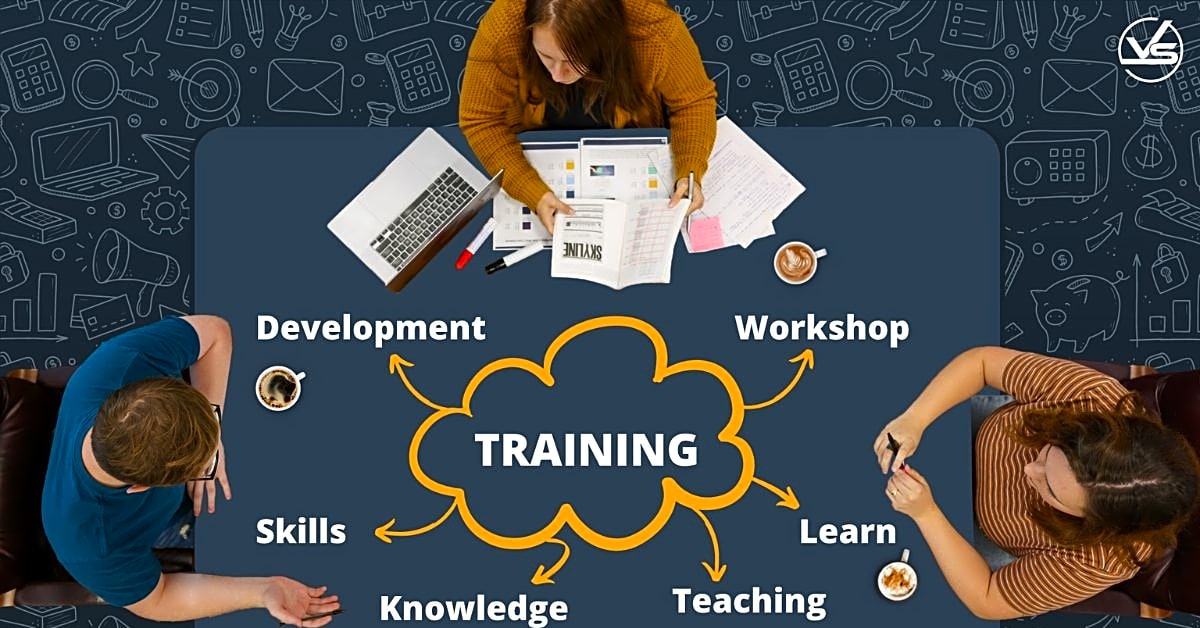Effective team communication is vital for the success of any organization. It allows team members to work together cohesively, share ideas and information, and achieve common goals. In today’s fast-paced and ever-changing business world, effective communication strategies are essential to keep teams connected and productive. In this article, we will discuss 10 proven and effective team communication strategies that every team leader and member needs to know. These strategies will help you improve team dynamics, foster collaboration, and ultimately lead to a more efficient and successful team. So, whether you are a new team leader or a seasoned member looking to enhance your team’s communication, read on to discover these valuable strategies that will benefit your team and organization.
Effective team communication is crucial for the success of any business. Not only does it promote a positive work environment, but it also helps in improving management and leadership skills, project and time management, team building, decision making, communication skills, problem solving, organizational skills, and productivity. In this article, we will discuss 10 effective team communication strategies that can greatly benefit your business.
Establish clear communication channels within your team. This includes regular team meetings, email updates, and one-on-one check-ins. This will ensure that everyone is on the same page and has access to important information.
Encourage active listening among your team members. This will foster open communication and promote a collaborative environment. Encourage them to actively listen to each other’s ideas and opinions without interrupting.
Take advantage of the various tools available in today’s digital age to improve team communication. Utilize project management software, messaging apps, and video conferencing tools to keep your team connected and organized.
It is important to clarify roles, responsibilities, and expectations for each team member. This will prevent confusion and ensure that everyone knows what is expected of them.
Regular feedback is crucial for improving team communication. Make sure to provide both positive and constructive feedback to your team members. This will help them understand their strengths and areas for improvement.
Trust is the foundation of effective team communication. Encourage your team members to trust each other and foster a safe environment where they can freely express their ideas and opinions.
Non-verbal cues, such as body language and tone of voice, can greatly impact how a message is received. Encourage your team members to be mindful of their non-verbal communication and to actively listen to non-verbal cues from others.
Having a diverse team with different perspectives can greatly benefit team communication. Encourage your team members to share their unique ideas and opinions, and consider them in decision-making processes.
Conflicts are inevitable in any team, but it is important to address them promptly and professionally. Encourage open communication and mediation to resolve conflicts in a productive manner.
Effective team communication is an ongoing process. Encourage your team to continuously improve their communication skills and provide opportunities for training and development. While there may be different opinions on what constitutes as effective team communication, these strategies have been proven to be successful in many businesses and can greatly benefit any team or organization.
Encouraging Diversity of Thought
One of the key aspects of effective team communication is encouraging diversity of thought. This means valuing different perspectives and ideas from team members, regardless of their background or role within the company. By promoting a culture of inclusivity and openness, teams can benefit from a wide range of opinions and insights that can lead to more creative and innovative solutions.
Continuously Improving
One of the key aspects of effective team communication is continuously improving and encouraging learning and development within the team. This not only helps in enhancing individual skills, but also promotes a culture of growth and improvement within the team.
Encouraging continuous learning can be achieved through various strategies such as providing training and development opportunities, setting up mentorship programs, and promoting knowledge sharing within the team. By investing in the growth and development of your team members, you are not only helping them become better communicators, but also improving the overall effectiveness of your team.
Encouraging Active Listening
Active listening is a crucial component of effective team communication. It involves paying full attention to what others are saying, understanding their perspectives, and responding appropriately. This not only fosters a sense of respect and understanding within the team, but it also promotes open communication and collaboration.
To encourage active listening in your team, start by setting ground rules for communication. These can include taking turns to speak, avoiding interruptions, and actively listening without distractions. It’s also important to lead by example and actively listen to your team members when they are speaking. This will create a positive culture of active listening within the team.
Another way to promote active listening is by providing opportunities for feedback and asking open-ended questions. This allows team members to share their thoughts and concerns, and also encourages them to listen to each other’s perspectives. Additionally, creating a safe and non-judgmental environment can help team members feel comfortable expressing their opinions and actively listening to others.
Fostering a Culture of Trust
One of the key elements in effective team communication is fostering a culture of trust. When team members feel comfortable and trusting towards each other, they are more likely to openly communicate and express their ideas. This creates a positive work environment where everyone feels valued and respected.
Encouraging open communication means creating an environment where team members feel safe to share their thoughts and opinions without fear of judgment or repercussions. This requires leaders to actively listen to their team members, acknowledge their contributions, and provide constructive feedback.
Respectful expression of ideas goes hand in hand with open communication. When team members feel respected, they are more likely to communicate in a respectful manner. This means actively listening to others, considering their perspectives, and responding in a calm and professional manner.
By fostering a culture of trust through open communication and respectful expression of ideas, teams can build strong relationships and work together effectively towards common goals. This also helps in avoiding conflicts and promoting a positive work environment where everyone feels heard and valued.
Utilizing the Right Tools
When it comes to effective team communication, utilizing the right tools is essential. In today’s digital age, there are numerous tools available that can greatly aid in improving team communication and collaboration. Let’s take a look at some of the most beneficial ones:
Project Management Software: These types of software are designed to help teams stay organized and on track with their tasks and projects. They allow for easy task assignment, progress tracking, and communication among team members. Some popular project management tools include Trello, Asana, and Basecamp.
Messaging Apps: With remote work becoming more prevalent, messaging apps have become a vital tool for team communication. They allow for quick and easy communication among team members, regardless of their location. Some popular messaging apps include Slack, Microsoft Teams, and Google Hangouts.
Video Conferencing Tools: When in-person meetings are not an option, video conferencing tools are a great alternative for face-to-face communication. They allow for real-time discussions, presentations, and screen sharing. Some popular video conferencing tools include Zoom, Skype, and WebEx.
Clarifying Expectations
One of the most important strategies for effective team communication is clarifying expectations. This involves defining roles, responsibilities, and expectations for each team member. When everyone knows their specific role and what is expected of them, it can greatly improve team dynamics and productivity.
By clearly defining roles, team members can avoid confusion and misunderstandings about who is responsible for what tasks. This can also help prevent conflicts and promote a sense of accountability within the team.
In addition to roles, it is also important to define responsibilities for each team member. This includes the tasks and duties that each person is responsible for completing. By clarifying responsibilities, team members can better understand their individual contributions to the overall goal and work together more efficiently.
Finally, setting expectations for each team member is crucial for effective communication. This includes expectations for communication methods, response times, and meeting deadlines. By setting clear expectations, team members can hold each other accountable and ensure that everyone is on the same page.
Overall, clarifying expectations is an essential part of effective team communication. It promotes clarity, accountability, and efficiency within the team, leading to better collaboration and overall success for the business.
Addressing Conflicts Promptly
One of the key factors in effective team communication is the ability to address conflicts promptly. Conflict is inevitable in any team, but how it is handled can make a huge difference in the success of the team and the overall work environment. When conflicts arise, it is important to have open communication and mediation as part of your conflict resolution strategy.
Open Communication: The first step in addressing conflicts promptly is to foster open communication within the team. This means creating a safe and non-judgmental space where team members can express their concerns and opinions without fear of retribution. Encouraging open communication allows for issues to be addressed before they escalate, and promotes a sense of trust and transparency within the team.
Mediation for Conflict Resolution: When conflicts do arise, having a designated mediator can help facilitate productive discussions and find a resolution that works for all parties involved. This person should be impartial and skilled in conflict resolution techniques, such as active listening and finding common ground. Mediation can help prevent conflicts from becoming personal and allow for a more objective and rational approach to finding a solution.
Establishing Clear Communication Channels
Effective communication is essential for any team to function successfully. It allows for information to be shared, problems to be addressed, and tasks to be completed efficiently. In order to have effective team communication, it is important to establish clear communication channels. This ensures that everyone is on the same page and knows where to turn for important updates and information. Here are three key channels that can greatly improve team communication:
Regular Team Meetings
Scheduling regular team meetings allows for face-to-face communication and collaboration. It also provides an opportunity for team members to ask questions and clarify any misunderstandings. By having a set time for meetings, everyone knows when to expect updates and can plan accordingly.
Email Updates
Email is a convenient way to share important information with the entire team. It allows for written communication and can also be used to share documents or links relevant to the project at hand. However, it is important to use email sparingly and only for necessary updates, as an overflowing inbox can lead to important messages being overlooked.
One-on-One Check-ins
In addition to group meetings, it is also beneficial to have one-on-one check-ins with team members. This allows for more personalized communication and gives team members the opportunity to discuss any concerns or suggestions in a private setting. These check-ins can also help in building stronger relationships within the team.
Providing Feedback
Providing feedback is a crucial aspect of effective team communication. It not only helps in building trust and fostering a positive work environment, but it also plays a significant role in continuous improvement within a team.
When giving feedback, it’s important to focus on both positive and constructive aspects. This means acknowledging what the team is doing well and providing suggestions for improvement. By highlighting successes, team members feel appreciated and motivated to continue performing at their best. On the other hand, constructive feedback helps identify areas of improvement and promotes growth and development within the team.
It’s also essential to provide specific and actionable feedback. Instead of making general statements, provide specific examples and suggestions for improvement. This makes it easier for team members to understand and implement the feedback.
Additionally, it’s important to deliver feedback in a timely manner. Waiting too long can make the feedback less effective and may lead to resentment or confusion among team members. By providing feedback in a timely manner, you can address issues as they arise and prevent them from escalating into bigger problems.
Lastly, remember to always keep the tone of your feedback positive and respectful. Avoid using accusatory language and focus on the behavior or actions rather than the person. This will help create a safe and open environment for team members to give and receive feedback.
Being Mindful of Non-Verbal Communication
When it comes to effective team communication, it is not just about what we say, but also how we say it. Non-verbal communication, such as body language and tone of voice, can greatly impact the effectiveness of our message. Being mindful of these non-verbal cues can help us better convey our thoughts and feelings to our team members.
Body language is a form of non-verbal communication that includes gestures, facial expressions, and posture. It can convey confidence, interest, or even discomfort. For example, crossing your arms can signal defensiveness or disagreement, while maintaining eye contact can show engagement and attentiveness.
Tone of voice is another important aspect of non-verbal communication. It refers to the way we speak, including our pitch, volume, and emphasis on certain words or phrases. A harsh tone can come across as aggressive or confrontational, while a calm and friendly tone can create a more positive and open atmosphere.
Being aware of our body language and tone of voice is crucial in team communication. We should strive to maintain an open and welcoming body posture and use a friendly and respectful tone when communicating with our team members. This will not only help us build stronger relationships with our team, but also ensure that our message is effectively conveyed.
Effective team communication is a key component of successful business management. By implementing these 10 strategies, you can improve communication within your team, foster a positive work environment, and ultimately achieve greater success in your business. Remember to continuously evaluate and improve your team communication for continued growth and success.






